A little further along the fourth dimension, we return to Doctor Who as presented in TWO dimensions.
U.N.I.T. can’t decide whether to battle Global Warming, a flesh-eating virus, nuclear holocaust, dinosaurs or planet-usurping man-geckos.
Podcast: Play in new window | Embed
Pertwee’s Third Doctor and Miss/Doctor Liz Shaw are persuaded to join Brigadier Alistair Gordon Lethbridge Stewart (aka “Bagels”) and investigate some happenings at a local nuclear power research facility, perched atop a labyrinth of caves. Recently, odd power cuts and multiple cases of loony tunes among the research staff have caught U.N.I.T.’s attention.
Could they be related to the fervent work ethic of the scientists. Or do they have anything to do with the race of lizard people living beneath them? Only The Doctor can solve the puzzle. Hilarity ensues.
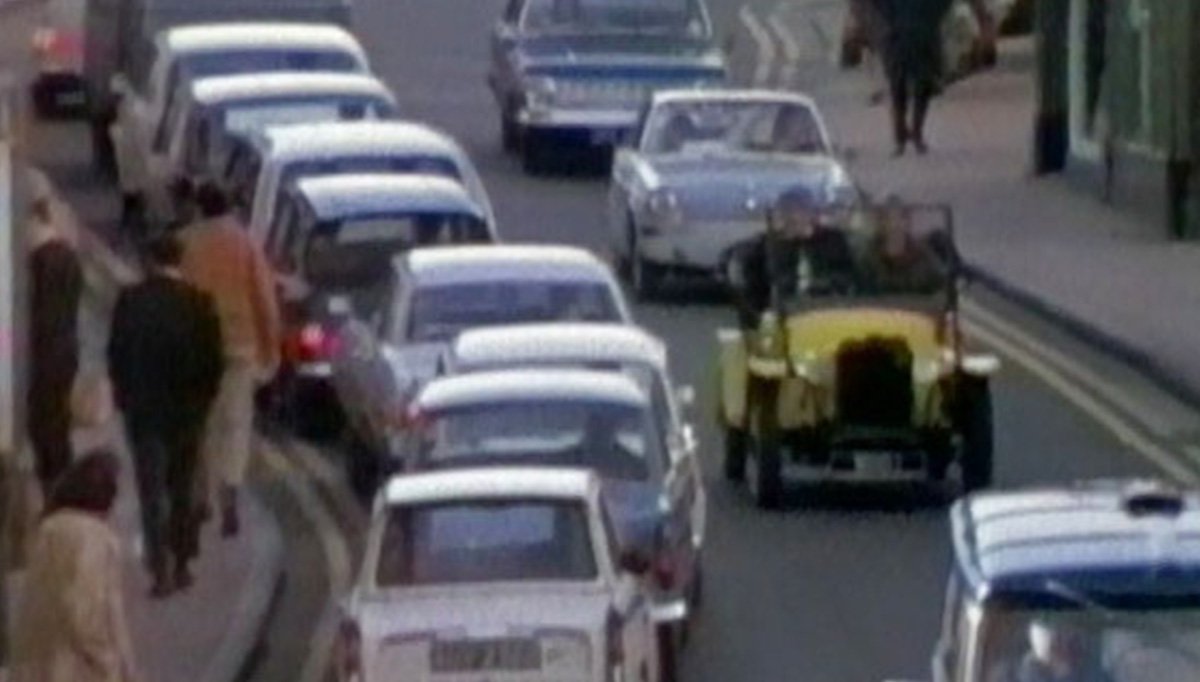

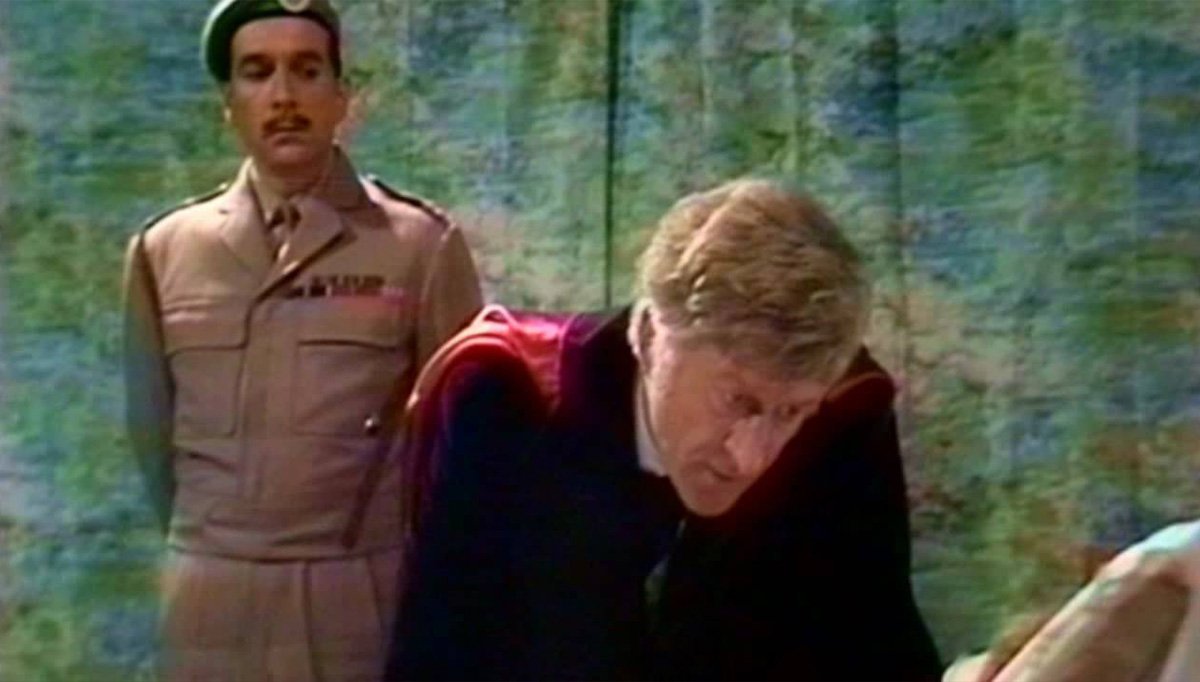

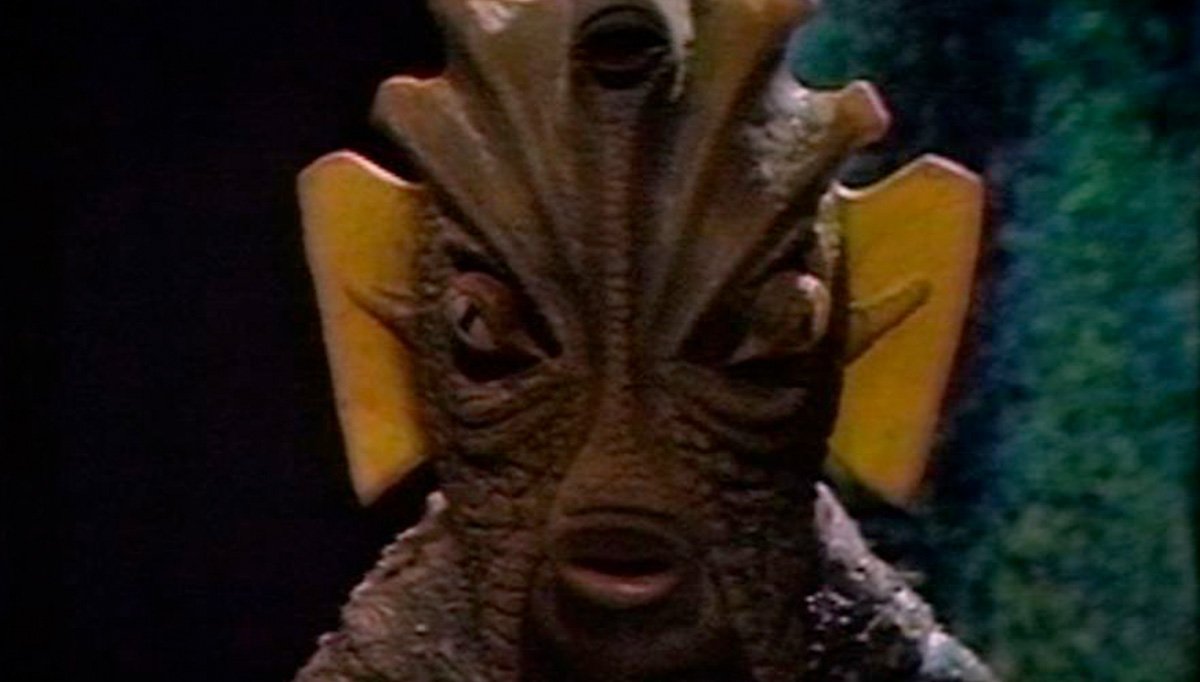

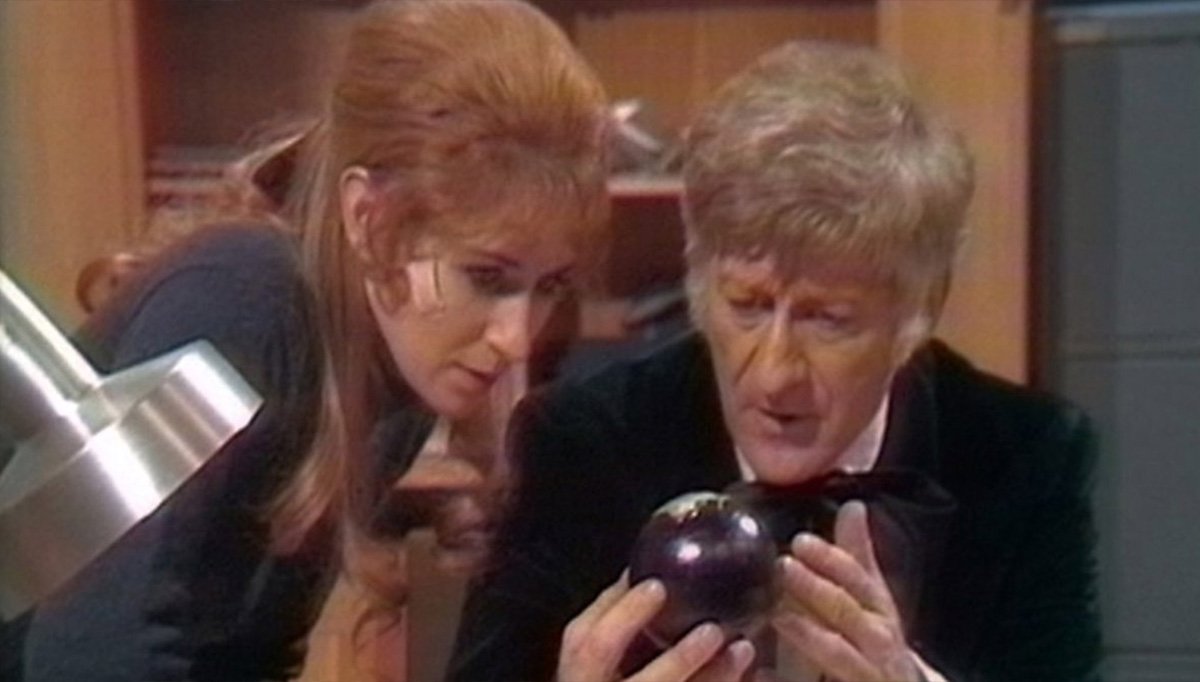

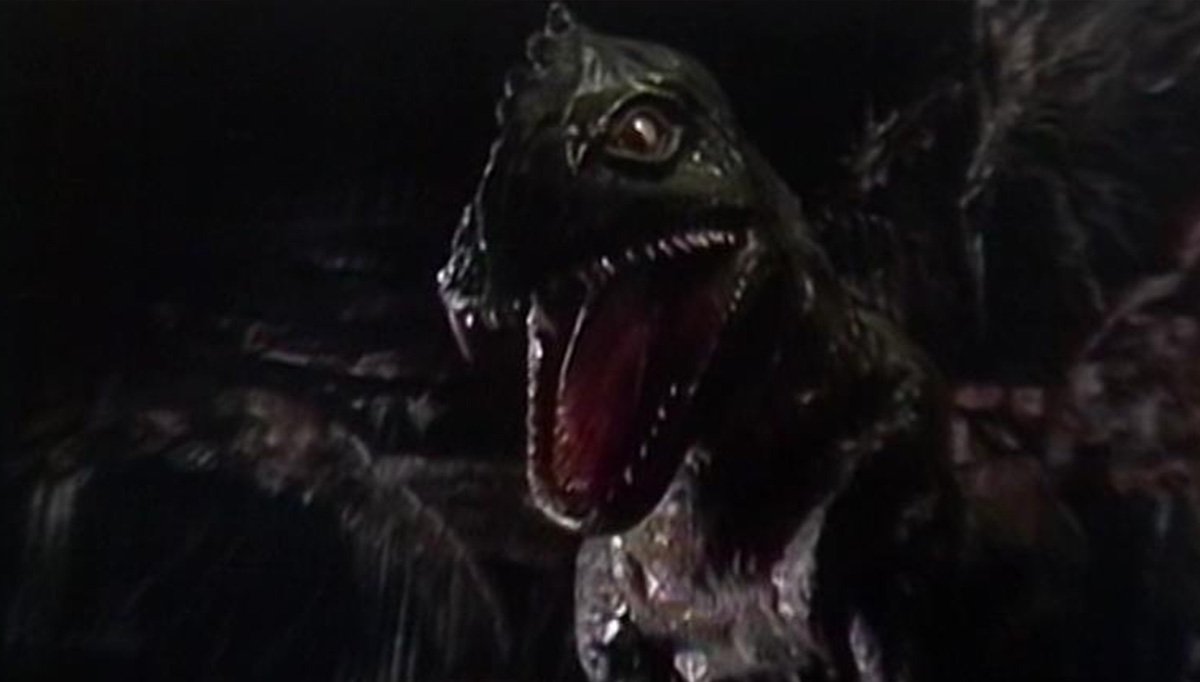

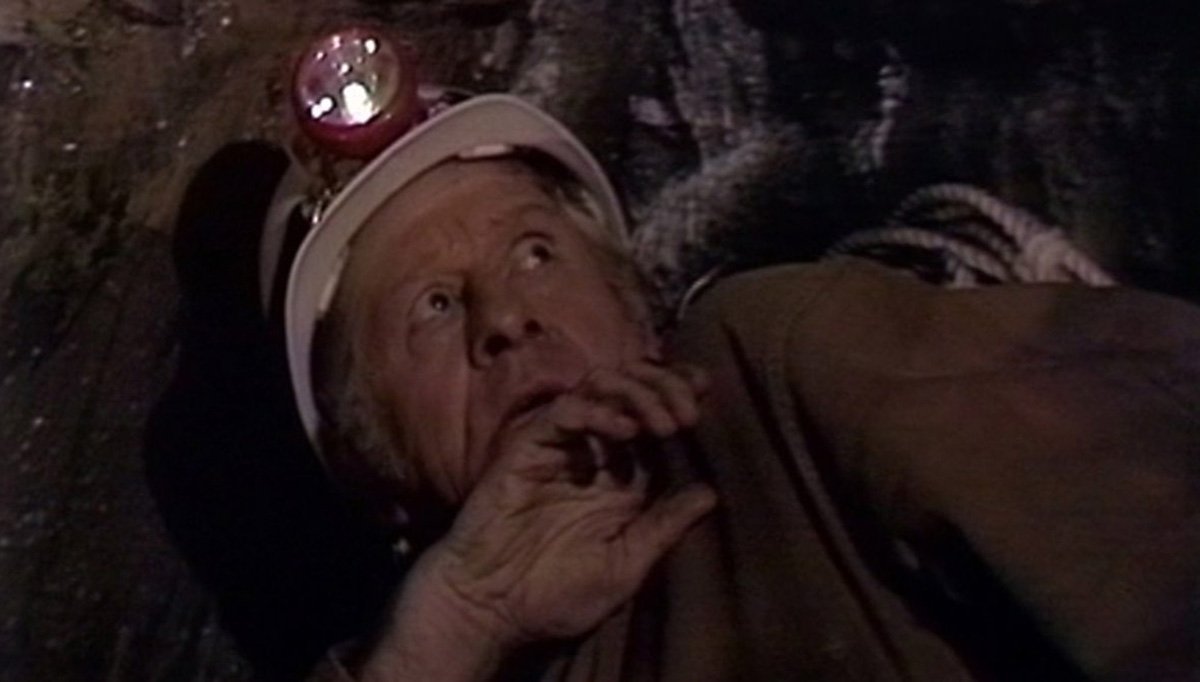

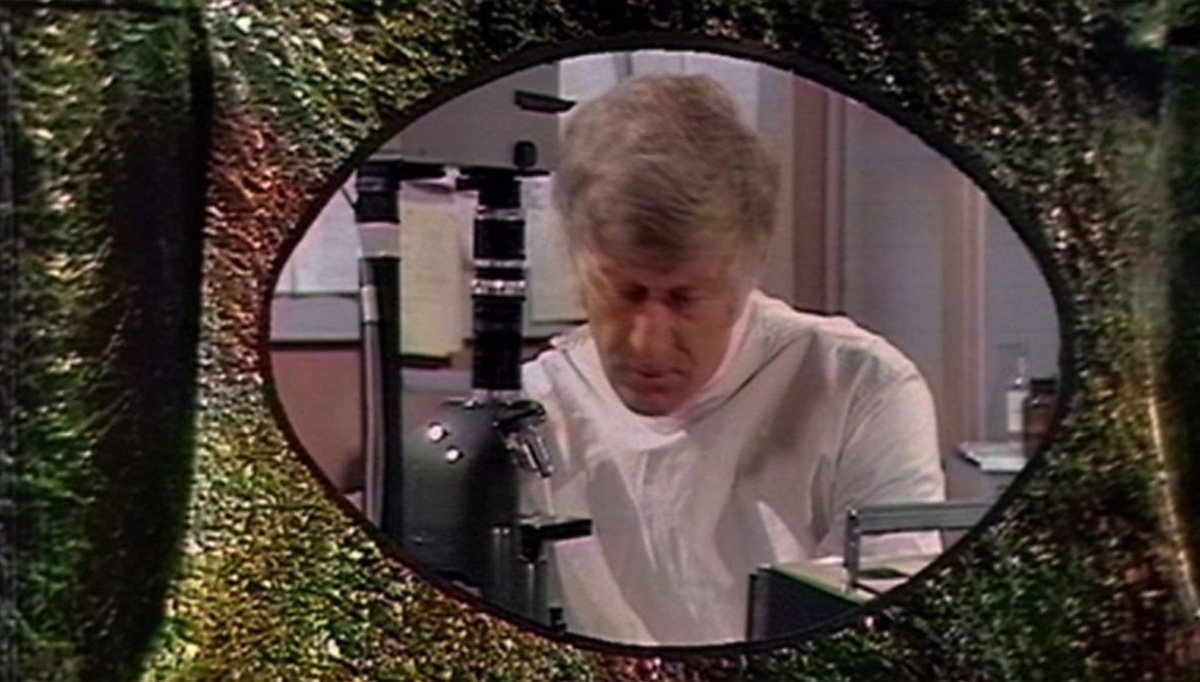

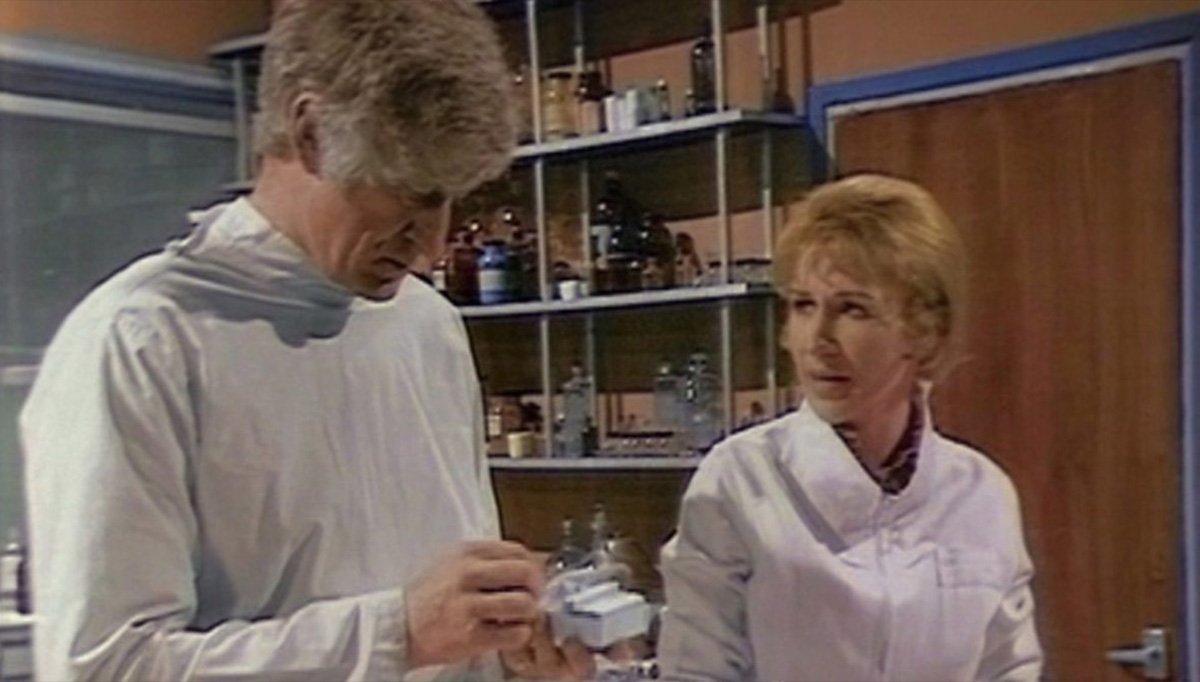

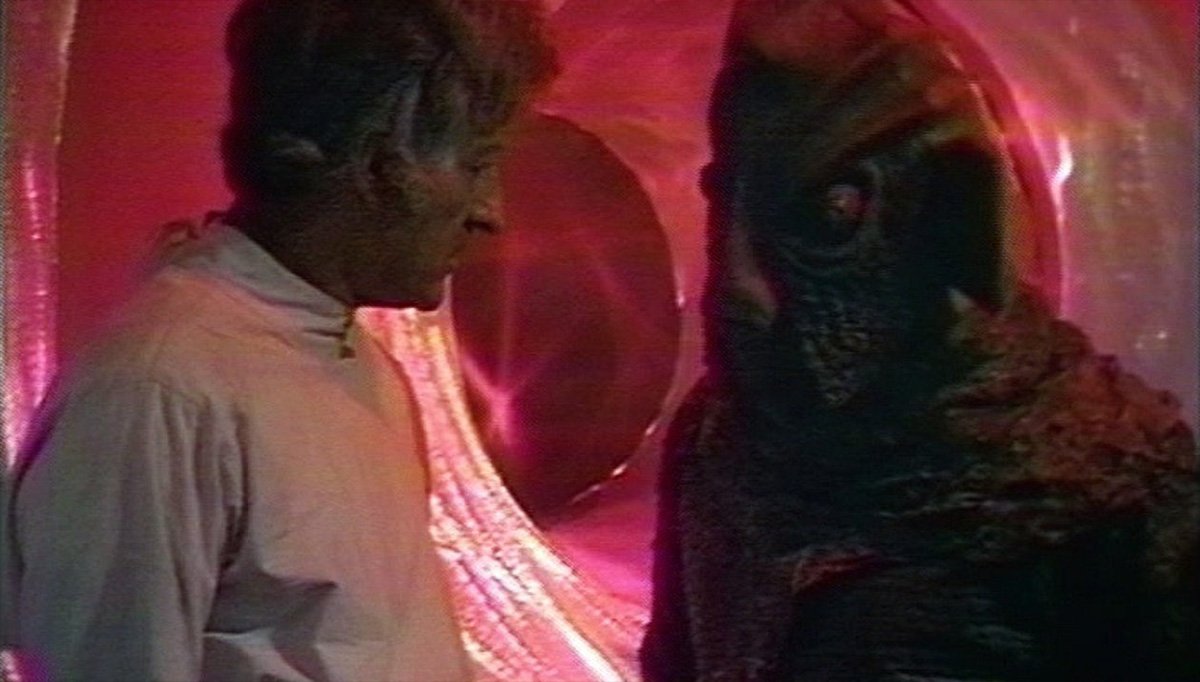

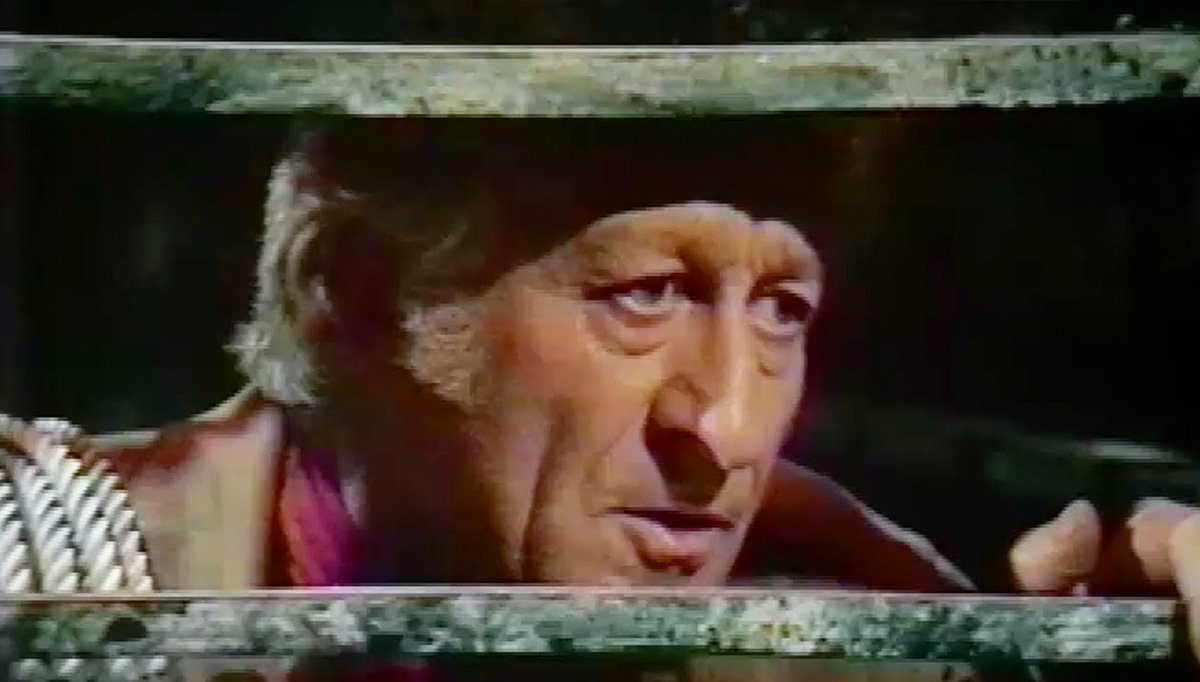

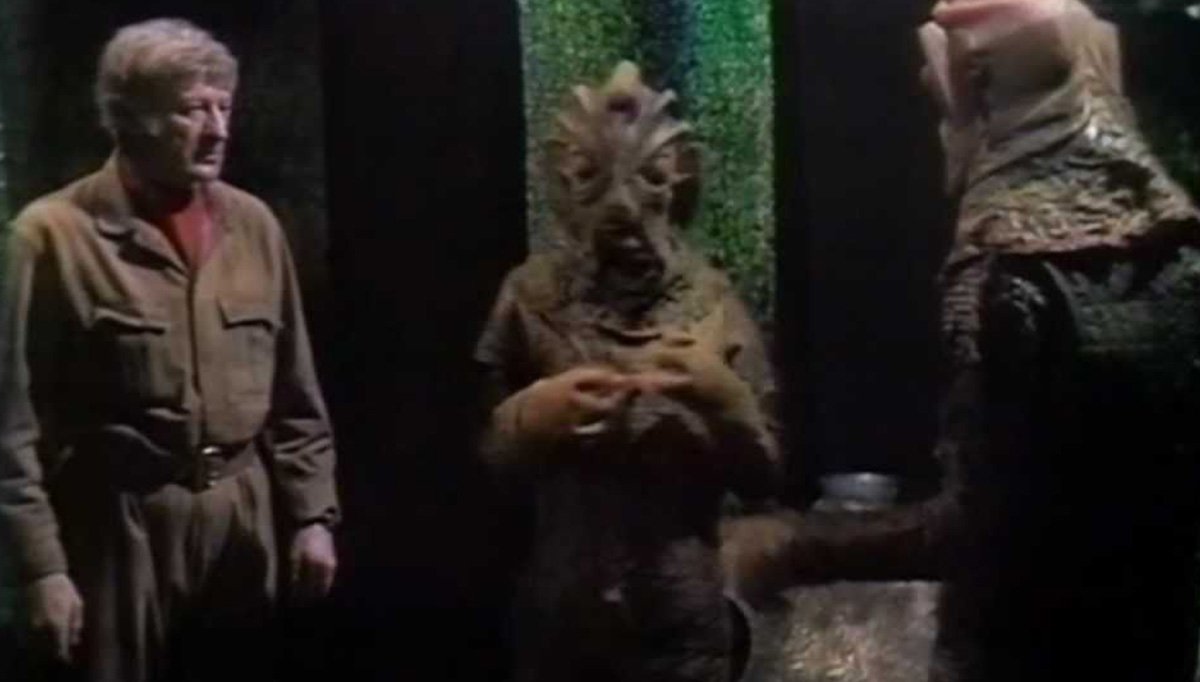

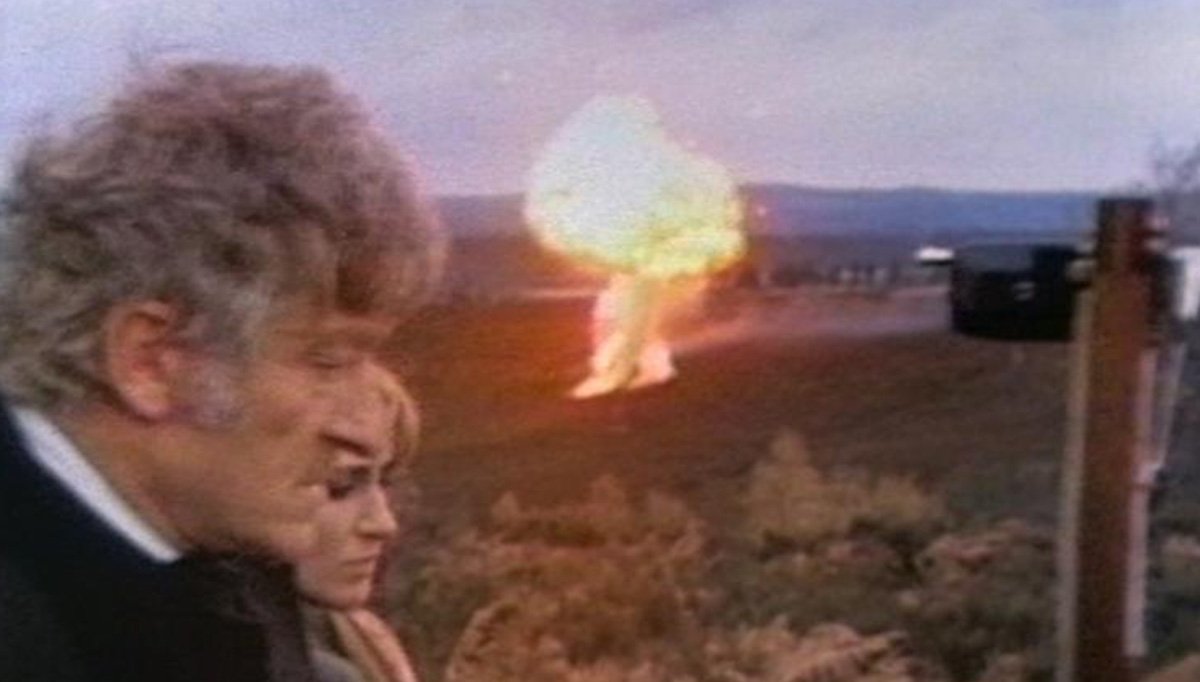


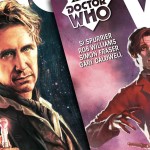
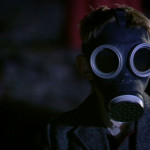







I actually forgot to send a listener mini for “The Silurians”. So, here it is!
Hello once more, Podcast Land! I’m back again for another Pertwee serial, and today we have “Doctor Who and the Silurians”. Why it’s called that is because of a gaff the production team made. But, whatever. On to the review!
Before I get into the nitty gritty, I must commend the Restoration Team on their efforts to recolor this serial’s episodes. All seven of these serial’s color tapes are gone, yet the black and white copies remained. What a wonderful restoration done. Bravo!
The production crew has a lot to live up to after the filmic sheen and heightened scares of Jon Pertwee’s inaugural story. An unwieldy, seven-part structure and collision of studio and location work – now more visible than ever in living colour – don’t augur well. But there’s a depth and richness to Malcolm Hulke’s story, and Timothy Combe’s translation of it, that make The Silurians a standout.
I love how this time the threat comes from an intelligent species native to the Earth, and this story does serve as a cautionary tale about humans and their xenophobia. This serial’s message still rings true over 40 years after its initial broadcast.
Interviews with the late, great Verity Lambert criticised the Third Doctor for being an establishment figure. That certainly isn’t the case in his formative stories. See the way he disrespects authority, turning his back on the uptight Lawrence the moment he begins briefing Unit about the Cyclotron. Smile as he ridicules government hierarchy (“I’ve got no time to chat to under-secretaries, permanent or otherwise”). And applaud as he becomes a one-man Acas in the name of peace. For someone ostensibly in the employ of Unit, he doesn’t for one moment side with their approach to interracial relations.
Aside from the mature, ultra-serious story (it’s a refreshingly downbeat ending), there is quality in spades. The location footage is uniformly high, for one thing. The symbolic emergence from the caves of a Silurian at sunrise and its prismatic point-of-view shots, Unit’s ground and aerial hunt over the heather-carpeted moors, and the panic-inducing spread of the Silurian virus via Masters’ journey through London… all are supremely choreographed.
And it’s a serial for firsts, among them: the first and only time “Doctor Who” is included in the title; the first appearance by vintage yellow car Bessie; and the first use in the programme of the dreaded Color Separation Overlay, a compositing technique whose early use is nearly always obvious due to the sparkly outlines of people or objects. As (first-time) producer Barry Letts once said: “We were the pioneers in the use of CSO in Doctor Who and indeed they encouraged us to be, because there was plenty of money about in those days from people getting new colour licences and so on.”
This serial, even though it had it’s rough spots, had me from start to finish. This serial is good, and it keeps the momentum from the last serial going. That’s why I’m handing out another 4.0/5 to this serial as well. It definitely deserves it.
Next time, the Doctor and UNIT are in a spot. Three astronauts go missing, and when they return, they are highly radioactive, and deadly to the touch! Soon, the Doctor discovers that these are not the astronauts, but ambassadors. If that’s the case, then where are the astronauts? And what does this extra-terrestrial meeting mean for Earth? Next time, “The Ambassadors of Death”. See you then!
“Doctor Who and the Silurians” was the first DOCTOR WHO serial Barry Letts produced. When the Doctor appeared, he was modifying the car for which he negotiated in the previous serial. Such continuity may be surprising since, for the first time, the title referred to the protagonist and got his name wrong. Script Editor Terrance Dicks’ writing partner, Malcolm Hulke, said alien invasion and mad scientist were the plots with which the decision to confine the Doctor to Earth left the show. Three seven-episode serials were also commissioned for the new team. In the first, Hulke turned his first plot around, using the planet’s ancient rulers as invaders.
The pace of this long story maintained viewer interest with a plot involving multiple mysteries. Despite diagnostic tests saying his equipment worked perfectly, Lawrence, the obstructive head of a research center built into a vast cave complex, believed periodic power losses were a technical problem. Leggy Liz Shaw learned the team working within the nuclear reactor, the deepest part of the research center, suffered the most excessive stress. Her discovery and an injured spelunker painting pictures on hospital walls drew the Doctor to the caves surrounding the research center. He suspected they housed an external force responsible for the power losses and realized something intelligent called off a savage creature that attacked both him and Baker, a security man suspecting sabotage. When a shadowy figure lurking in the caves was shot, UNIT pursued the victim and Director Timothy Comb’s choice to depict the chase from the monster’s viewpoint was creative and stressed the mystery.
The Doctor, Lawrence, and Baker’s competing theories and Quinn’s relationship with the intelligent cave creatures emphasized the tension. During the chase, Quinn made a fatal mistake, capturing the wounded creature he was to help return to the caves and planning to bargain its safety for advanced, scientific knowledge instead. The Doctor and Liz, suspicious of him, did not reveal the fact the wounded creature remained nearby after attacking Liz. They also kept the facts their quarry was reptilian and dated from before the continental drift from the Brigadier. The Doctor feared the military would ruin any chance for scientific discovery in the caves and moved back and forth between them and the research center. His journeys symbolized the tension between a careful, scientific approach to solving the mysteries in the caves he favored and an all out military attack the Brigadier would lead if it were authorized. Liz used this conflict to blackmail the Doctor into taking her to the caves where mysterious, bipedal reptiles called Silurians leached power from the nuclear reactor to revive from deep hibernation.
This story was only Jon Pertwee’s second as the Doctor. So, it may have been too soon for him to arrive and take charge, as he often would in the future. He argued for negotiating a peaceful coexistence between Silurians and humans once Masters, a high ranking bureaucrat Lawrence summoned arrived. The official refused to remove UNIT, but denied the Brigadier reinforcements needed to search the vast cave complex. The Doctor was persuasive, but his success evaporated when Quinn’s death at the hands of a Silurian was discovered. The Doctor was more influential with the Silurians as they pondered whether to study or destroy humanity. They set a small, entombed UNIT party free before revealing the Doctor needed to find an antidote for their incurable plague. After he succeeded, Silurians captured the research center and prepared another weapon the Doctor and Liz destroyed, thereby persuading the reptiles to return to hibernation. At the Silurian base, the Doctor planned to revive them one at a time and reason with each. UNIT, though, murdered the creatures by blowing up their base.
Even more so than the last story, the Silurians shows Doctor Who is now all grown up. Characters are multifaceted, with both good and bad traits. Not all decisions are right, not all moral choices are clear, and not all plans work out in the end. The Silurians were here first, both sides have a just and arguable case. Trust, betrayal and communication are tested at every turn and the ending is intentionally left ambiguous. As an audience we know that there really was no winner, a point especially relevant to the doctor himself. Indeed he fails here in part because he doesn’t fully trust the brigadier, a mistake he must overcome in later stories.
This story was written beautifully and although the plague subplot got just a little boring at times, It was overall a great ride. It also demonstrates how a show with monsters and aliens can avoid an invasion story week after week. The Silurians were a little two-dimensional for me, and it would be great to retroactively rewrite the script to explore them in greater depth. The argument that leads to the coup amounts to bullying and would have been better served as a battle of which Silurian controls the greater resources. I would have also liked to have seen a battle of “sonic attacks” for leadership rather than a back stabbing. On the human side, I’d change the leader who cracks under pressure trope that is used yet again. Lawerence would have been a better character if hecame around in the end and admitted his mistake only then to be infected.
Despite the Silurians being a little shaky in more ways than one, this is a great story that makes you think about it long after you’ve finished. Thus it earns a pot-holing 4.6
The Doctor is much more likeable in this episode. He’s still a little bit of a dick to some people, but it seems to be in the name of peace. Pertwee is, by far, not one of my favorite doctors, but I’m trying to give him a little more credit on this watch through.
I liked the banter between Doc and Shaw (DS). I also like that this serial goes a little darker than they regularly do: with the destructive ending, the questioning of morality, the obvious racism (or xiophobiasm is more accurate), and the anti militarism story lines. This serial debut’s the Silurians and the 50 year hibernation mentioned works really well with the Matt Smith episodes (“The Hungry Earth” & “Cold Blood”). BAGLS rides the line between rational empathetic authority figure and an irrational cold militaristic leader. He’ll do this throughout his run on the show. He is, in an Eccleston voice, fantastic.
That being said I still disliked some elements. The sexism continues. Ms Shaw can handle personnel and the Doctor can do the science. The Doctor’s name in the title as “Doctor Who.” I get that it was a production mistake, but if wasn’t the only usage this season I’d write it off. Spoilers. Then there was the dinosaur in episode 2 couldn’t crush Doc. The foot just floated in midair above him. This goes beyond Voord-hiding. It was more like Voord-escaping. Why to all reptelian type creatures in Doctor Who have issues with their septum? Do they all really need to breathe that hard. And to top it off Doc names the “Silurians” and the entire race just goes with it for their entire history on the show.
Some pros some cons: Not bad overall. I’ll give it a 3.5. I still don’t really like this Doc, but I’m finding positives.
Trivia:
Fulton Mackay, who played Dr. Quinn was considered for the role of the fourth doctor after Pertwee left.
Norman Jones, Major Baker, previously played Khrisong in the Abominable Snowmen and will appear in future Doctor Who serials.
Even though it aired in 1970, parts of this serial were filmed in November 1969, which makes this the final serial of the 60’s.
Hi guys, back with another inane mini-review with a few bits of trivia.
So, Silurians! A solid adventure story that sees a lot – rock climbing, cave paintings and men in rubber suits debating the politics and morals of wiping out the monkeys! It also introduces another keystone of the Doctor’s time with UNIT, his second favourite mode of travel – Bessie! The perfect vehicle for the Doctor that will be with him for the rest of the Third Doctor’s era, the very first Fourth Doctor adventure and indeed the Seventh Doctor gets to drive it later on! He will gain a second car later on – the Whomobile – and I look forward to your reaction when you see it.
3/5 – a good story that’s a bit over long.
Trivia time again!
Fulton Mackay who played Doctor Quinn, was later shortlisted to play the Fourth Doctor but turned the role down.
We see the Doctor’s tattoo again. The novel Christmas on a Rational Planet explains that the tattoo is a mark of a Time Lord exile.
The title is the first and only time a serial mentions the name Doctor Who in its title. This was due to a miscommunication with the graphics department. All scripts for the series for much of its run were submitted as ‘Doctor Who and the…’ so this is how the error came about, with the practice of naming the scripts such being phased out later.
Interestingly, the Target novelisations which first launched during Pertwee’s reign continued this tradition well into the 80s. Ironicially, the novelisation of the Silurians was retitled Doctor Who and the Cave Monsters when published.
Hey. More trivia here. Actor Paul Darrow, known for playing Avon in Blakes 7 appeared in this story as UNIT Captain Hawkins.